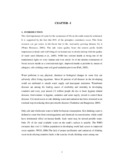Please use this identifier to cite or link to this item:
https://elibrary.tucl.edu.np/handle/123456789/627| Title: | Isolation and Characterization of escherichia Colifrom Drinking water of urban Kathmandu |
| Authors: | Aryal, Saurav Nath |
| Keywords: | water pollution;coliform |
| Issue Date: | 2009 |
| Publisher: | Central Department of Microbiology |
| Institute Name: | Central Department of Microbiology |
| Level: | Masters |
| Abstract: | Water borne diseases are among the leading causes of morbidity and mortality indeveloping countries like Nepal.This study carried out to evaluate the drinking waterquality of urban areas of Kathmandu, was conducted from August 2008 to March 2009in the laboratory of Central Department of Microbiology, Kirtipur. A total of 102 tapwater samples were randomly collected from different areas of Kathmandu. Thesesamples were analysed for physicochemical and microbiological parameters to assessthe drinking water quality.E. coli isolated from these water samples were subjected toantibiotic susceptibility and oligodynamic testing. Distinct variation in temperature was observed with the highest and the lowesttemperature being 25.7 O C and 11.8 O C respectively. No variation was seen among thepH values of the water samples with all the values lying within the WHOguideline(6.5-8.5). Microbial quality analysis revealed86.2% and 19.6% of the samples to contain totalcoliform and thermotolerant coliform respectively beyond the WHO guideline(0 CFU/100 ml). A total of 20E. coli isolates were obtained from 20 water samplestested positive for thermotolerant coliform. Antibiotic susceptibility testing revealedresistance of E. coli isolates mainly towards Cephalexin(65%) followed byAmoxycillin(45%) and Tetracycline(15%). All the isolates were 100% sensitive toCo-trimoxazole, Amikacin, Chloramphenicol, Ceftriaxone, Ciprofloxacin, NalidixicAcid and Gentamicin. Study on oligodynamic action revealed silver to be highlyeffective, copper effective while brass, aluminium and steel totally ineffective ininhibiting theE.coliisolates. The average zone of inhibition for silver and copper were6.4 mm and 4.1mm respectively. |
| URI: | http://elibrary.tucl.edu.np/handle/123456789/627 |
| Appears in Collections: | Microbiology |
Files in This Item:
| File | Description | Size | Format | |
|---|---|---|---|---|
| COVER.pdf | 48.86 kB | Adobe PDF |  View/Open | |
| CHAPTER.pdf | 260.98 kB | Adobe PDF |  View/Open |
Items in DSpace are protected by copyright, with all rights reserved, unless otherwise indicated.
